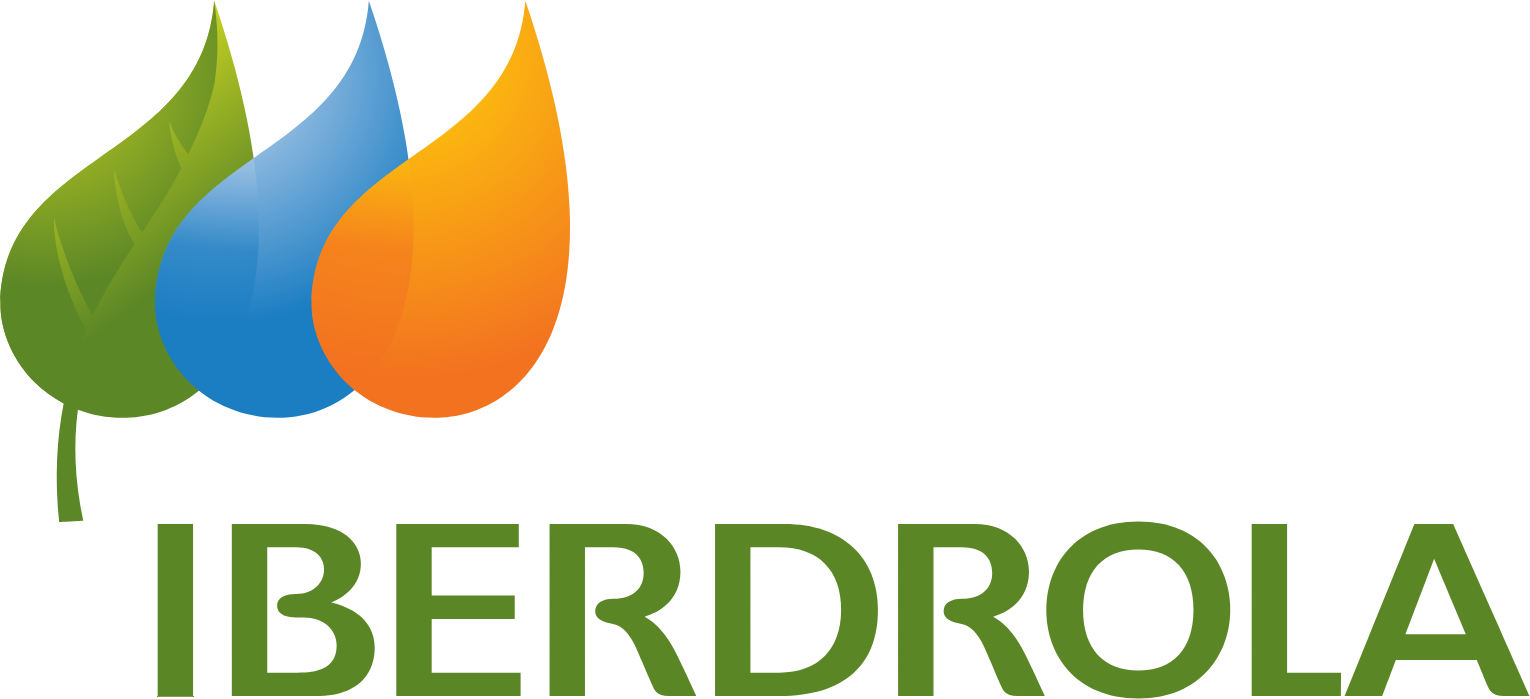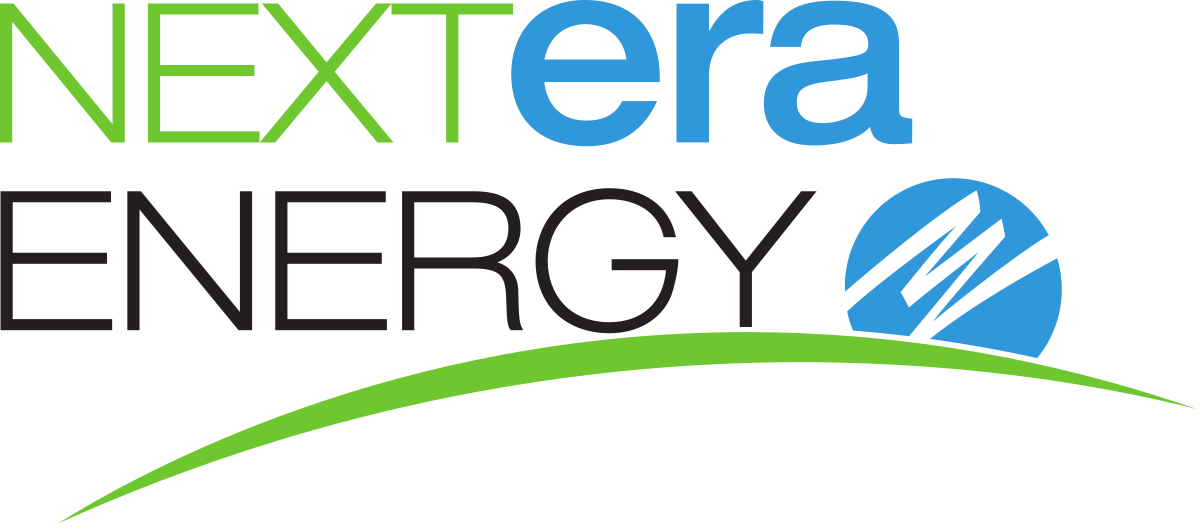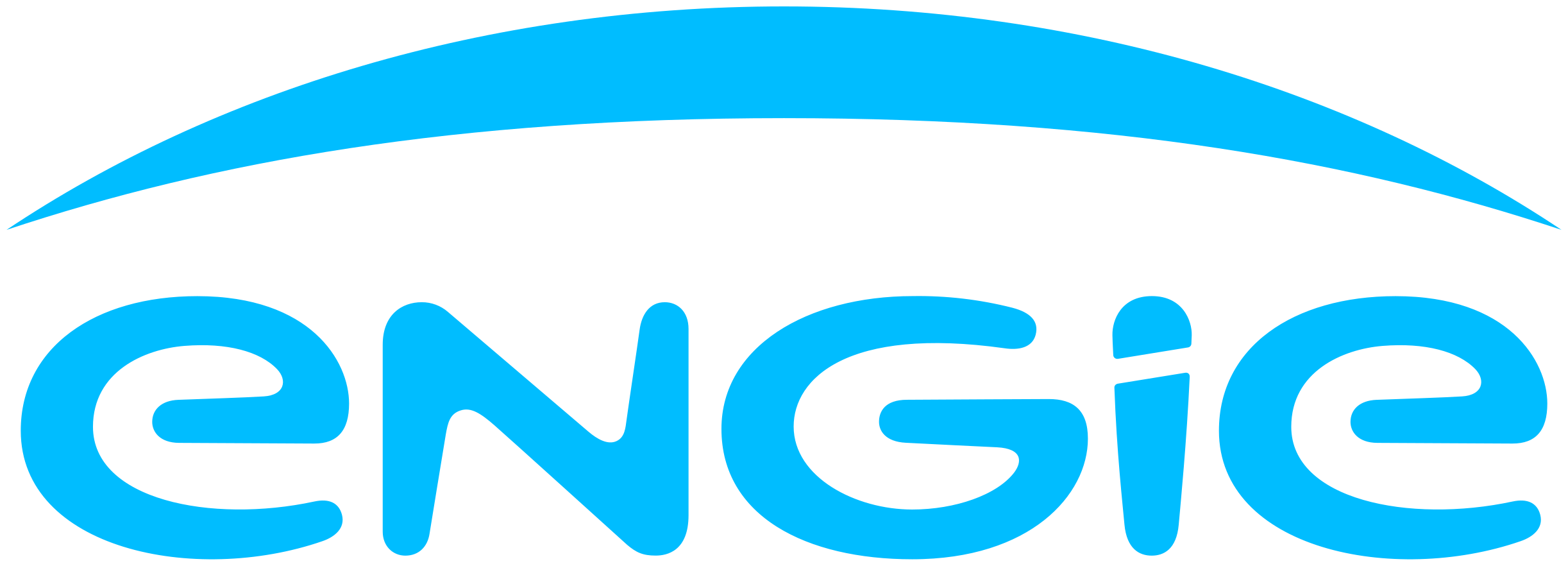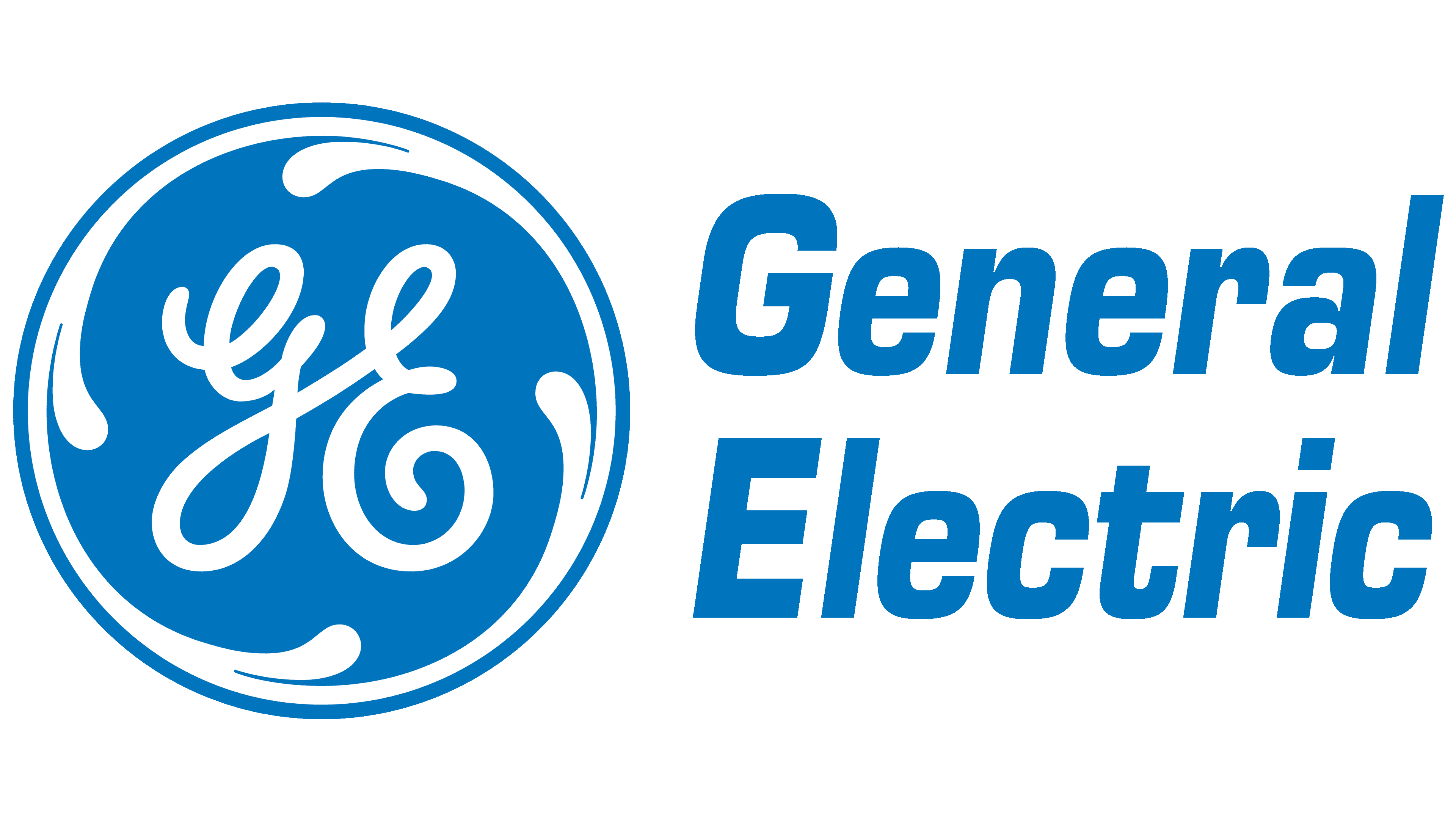Global Satellite Solar Cell Materials Market: By Material Types, By Orbit, By Application, By Region & Segmental Insights Trends and Forecast, 2024 – 2034
- Industry: Energy & Power
- Report ID: TNR-110-1110
- Number of Pages: 420
- Table/Charts : Yes
- June, 2024
- Base Year : 2024
- No. of Companies : 10+
- No. of Countries : 29
- Views : 10173
- Covid Impact Covered: Yes
- War Impact Covered: Yes
- Formats : PDF, Excel, PPT
Satellite solar cells require materials that can withstand the harsh conditions of space while efficiently converting solar energy into electrical power. The materials used in satellite solar cells are carefully selected based on their performance, durability, and suitability for the space environment.
Silicon is the most widely used material in solar cell manufacturing due to its abundance, stability, and high efficiency in converting sunlight into electricity. Silicon solar cells are typically made from crystalline silicon wafers, which offer good efficiency and reliability for satellite applications. Satellites play a crucial role in environmental monitoring, climate research, and weather forecasting by collecting data on atmospheric conditions, land surface temperatures, ocean temperatures, and greenhouse gas concentrations. Solar-powered satellites enable continuous operation in orbit, supporting long-term monitoring efforts and climate research initiatives. In Terms of Revenue, the Global Satellite Solar Cell Materials Market was Worth US$ 43.3 Mn in 2023, Anticipated to Witness CAGR of 13.2% During 2024 – 2034.

Global Satellite Solar Cell Materials Market Dynamics
- Increasing Satellite Deployment: The growing demand for satellites for communication, Earth observation, navigation, scientific research, and military applications drives the need for satellite solar cell materials. As more satellites are deployed into orbit, there is a corresponding increase in the demand for materials that can withstand the rigors of space and efficiently convert solar energy into electrical power.
- Space Exploration Initiatives: The increasing interest in space exploration missions, including lunar exploration, Mars exploration, and beyond-Earth orbit missions, creates opportunities for satellite solar cell materials. Materials that can withstand the harsh conditions of space and provide reliable power generation are essential for powering spacecraft on long-duration missions.
- Growing Commercial Satellite Services: The commercialization of space and the emergence of private space companies drive the demand for satellite-based services, such as satellite imaging, remote sensing, satellite-based internet, and global connectivity. Commercial satellite operators require efficient and cost-effective solar cell materials to power their satellite fleets and deliver reliable services to customers worldwide.
Silicon has garnered major market share in the global satellite solar cell materials market during the forecast period (2024 – 2034).
Silicon-based solar cells are known for their high efficiency and reliability, making them a preferred choice for satellite applications where performance and durability are paramount. The demand for silicon in satellite solar cells is driven by the need for materials that can consistently generate electricity over the lifetime of the satellite mission. Silicon is one of the most abundant elements on Earth, and the manufacturing processes for silicon-based solar cells have been optimized over the years, resulting in cost-effective production methods.
The demand for silicon as a satellite solar cell material is influenced by its affordability and cost-effectiveness compared to alternative materials. Ongoing advancements in silicon solar cell technology, such as the development of monocrystalline and multicrystalline silicon cells, drive the demand for silicon in satellite applications. These advancements improve the efficiency and performance of silicon-based solar cells, making them more attractive for satellite manufacturers.

By orbit, low earth orbit (LEO) has garnered second largest market share in the global satellite solar cell materials market in 2023.
LEO satellite constellations, consisting of hundreds or even thousands of satellites orbiting at altitudes below 2,000 Km, are being deployed for various purposes such as global broadband internet coverage, Earth observation, remote sensing, and communication. The demand for satellite solar cell materials is driven by the need to power these constellations and ensure continuous operation and connectivity. Companies such as SpaceX, OneWeb, and Amazon are deploying LEO satellite constellations to provide global broadband internet services to underserved and remote areas.
These mega-constellations require efficient and reliable solar cell materials to generate electricity for onboard systems, including communication payloads, data processing units, and user terminals. LEO satellites are used for high-resolution Earth observation and remote sensing applications, including environmental monitoring, disaster management, agriculture, and urban planning. Solar cell materials power imaging sensors, scientific instruments, and onboard systems on Earth observation satellites, enabling continuous data collection and analysis.

Space station Segment had the highest share in the global satellite solar cell materials market in 2023.
Space stations require a continuous and reliable power supply to support various onboard systems, including life support, communication, navigation, research, and experiments. Solar cells provide an efficient means of generating electricity from sunlight in the vacuum of space, ensuring uninterrupted power for station operations. Space stations are often designed with modular and expandable architectures to accommodate future upgrades, expansions, and scientific payloads.
Solar cell materials compatible with modular construction techniques facilitate the integration of additional solar arrays and power generation capacity as the station’s mission requirements evolve over time. Solar cell materials work in tandem with energy storage systems, such as batteries or fuel cells, to store excess energy generated during periods of peak sunlight for use during orbital night or eclipses. Efficient solar cell materials help maximize energy harvest and storage capacity, ensuring a reliable power supply for critical station functions.
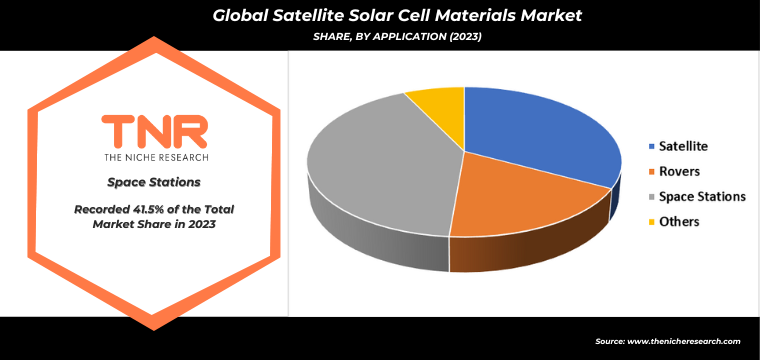
By Region, North America dominated the global satellite solar cell materials market in 2023.
North America, particularly the United States, is a global leader in space exploration initiatives. Government agencies such as NASA (National Aeronautics and Space Administration) and private aerospace companies drive the demand for satellite solar cell materials to power various space missions, including satellite deployments, space exploration probes, and crewed missions to the International Space Station (ISS). The demand for satellite-based communication and navigation services continues to grow in North America.
Satellite operators and telecommunications companies require reliable solar cell materials to power communication satellites, navigation satellites, and satellite constellations providing broadband internet coverage, GPS services, and satellite radio broadcasting. North American research institutions, universities, and government agencies conduct scientific research and exploration missions using satellites and space probes. Solar cell materials power scientific satellites and space telescopes, enabling observations of celestial objects, astronomical phenomena, and space weather.

Competitive Landscape: Global Satellite Solar Cell Materials Market:
- Airbus
- Azur Space Solar Power GmbH
- CESI S.P.A
- MicroLink Device, Inc
- Mitshubishi Electric Corporation
- Northrop Grumman
- Rocket LAB USA
- Sharp Corporation
- Spectrolab
- Thales Alenia Space
- Other Industry Participants
Global Satellite Solar Cell Materials Market Scope
| Report Specifications | Details |
| Market Revenue in 2023 | US$ 43.3 Mn |
| Market Size Forecast by 2034 | US$ 169.4 Mn |
| Growth Rate (CAGR) | 13.2% |
| Historic Data | 2016 – 2022 |
| Base Year for Estimation | 2023 |
| Forecast Period | 2024 – 2034 |
| Report Inclusions | Market Size & Estimates, Market Dynamics, Competitive Scenario, Trends, Growth Factors, Market Determinants, Key Investment Segmentation, Product/Service/Solutions Benchmarking |
| Segments Covered | By Material Types, By Orbit, By Application, By Region |
| Regions Covered | North America, Europe, Asia Pacific, Middle East & Africa, Latin America |
| Countries Covered | U.S., Canada, Mexico, Rest of North America, France, The UK, Spain, Germany, Italy, Nordic Countries (Denmark, Finland, Iceland, Sweden, Norway), Benelux Union (Belgium, The Netherlands, Luxembourg), Rest of Europe, China, Japan, India, New Zealand, Australia, South Korea, Southeast Asia (Indonesia, Thailand, Malaysia, Singapore, Rest of Southeast Asia), Rest of Asia Pacific, Saudi Arabia, UAE, Egypt, Kuwait, South Africa, Rest of Middle East & Africa, Brazil, Argentina, Rest of Latin America |
| Key Players | Airbus, Azur Space Solar Power GmbH, CESI S.P.A, MicroLink Device, Inc, Mitshubishi Electric Corporation, Northrop Grumman, Rocket LAB USA, Sharp Corporation, Spectrolab, Thales Alenia Space |
| Customization Scope | Customization allows for the inclusion/modification of content pertaining to geographical regions, countries, and specific market segments. |
| Pricing & Procurement Options | Explore purchase options tailored to your specific research requirements |
| Contact Details | Consult With Our Expert
Japan (Toll-Free): +81 663-386-8111 South Korea (Toll-Free): +82-808- 703-126 Saudi Arabia (Toll-Free): +966 800-850-1643 United Kingdom: +44 753-710-5080 United States: +1 302-232-5106 E-mail: askanexpert@thenicheresearch.com
|
Global Satellite Solar Cell Materials Market
By Material Type
- Silicon
- Copper Indium Gallium Selenide (CIGS)
- Gallium Arsenide (GaAs)
- Other Material Types
By Orbit
- Low Earth Orbit (LEO)
- Medium Earth Orbit (MEO)
- Geostationary Orbit (GEO)
- Highly Elliptical Orbit (HEO)
- Polar Orbit
By Application
- Satellite
- Rovers
- Space Stations
- Others
By Region
- North America (U.S., Canada, Mexico, Rest of North America)
- Europe (France, The UK, Spain, Germany, Italy, Nordic Countries (Denmark, Finland, Iceland, Sweden, Norway), Benelux Union (Belgium, The Netherlands, Luxembourg), Rest of Europe)
- Asia Pacific (China, Japan, India, New Zealand, Australia, South Korea, Southeast Asia (Indonesia, Thailand, Malaysia, Singapore, Rest of Southeast Asia), Rest of Asia Pacific)
- Middle East & Africa (Saudi Arabia, UAE, Egypt, Kuwait, South Africa, Rest of Middle East & Africa)
- Latin America (Brazil, Argentina, Rest of Latin America)
Report Layout

Table of Contents
Note: This ToC is tentative and can be changed according to the research study conducted during the course of report completion.
**Exclusive for Multi-User and Enterprise User.
Global Satellite Solar Cell Materials Market
By Material Types
- Silicon
- Copper Indium Gallium Selenide (CIGS)
- Gallium Arsenide (GaAs)
- Other Material Types
By Orbit
- Low Earth Orbit (LEO)
- Medium Earth Orbit (MEO)
- Geostationary Orbit (GEO)
- Highly Elliptical Orbit (HEO)
- Polar Orbit
By Application
- Satellite
- Rovers
- Space Stations
- Others
By Region
- North America (U.S., Canada, Mexico, Rest of North America)
- Europe (France, The UK, Spain, Germany, Italy, Nordic Countries (Denmark, Finland, Iceland, Sweden, Norway), Benelux Union (Belgium, The Netherlands, Luxembourg), Rest of Europe)
- Asia Pacific (China, Japan, India, New Zealand, Australia, South Korea, Southeast Asia (Indonesia, Thailand, Malaysia, Singapore, Rest of Southeast Asia), Rest of Asia Pacific)
- Middle East & Africa (Saudi Arabia, UAE, Egypt, Kuwait, South Africa, Rest of Middle East & Africa)
- Latin America (Brazil, Argentina, Rest of Latin America)
The Niche Research approach encompasses both primary and secondary research methods to provide comprehensive insights. While primary research is the cornerstone of our studies, we also incorporate secondary research sources such as company annual reports, premium industry databases, press releases, industry journals, and white papers.
Within our primary research, we actively engage with various industry stakeholders, conducting paid interviews and surveys. Our meticulous analysis extends to every market participant in major countries, allowing us to thoroughly examine their portfolios, calculate market shares, and segment revenues.
Our data collection primarily focuses on individual countries within our research scope, enabling us to estimate regional market sizes. Typically, we employ a bottom-up approach, meticulously tracking trends in different countries. We analyze growth drivers, constraints, technological innovations, and opportunities for each country, ultimately arriving at regional figures.Our process begins by examining the growth prospects of each country. Building upon these insights, we project growth and trends for the entire region. Finally, we utilize our proprietary model to refine estimations and forecasts.
Our data validation standards are integral to ensuring the reliability and accuracy of our research findings. Here’s a breakdown of our data validation processes and the stakeholders we engage with during our primary research:
- Supply Side Analysis: We initiate a supply side analysis by directly contacting market participants, through telephonic interviews and questionnaires containing both open-ended and close-ended questions. We gather information on their portfolios, segment revenues, developments, and growth strategies.
- Demand Side Analysis: To gain insights into adoption trends and consumer preferences, we reach out to target customers and users (non-vendors). This information forms a vital part of the qualitative analysis section of our reports, covering market dynamics, adoption trends, consumer behavior, spending patterns, and other related aspects.
- Consultant Insights: We tap into the expertise of our partner consultants from around the world to obtain their unique viewpoints and perspectives. Their insights contribute to a well-rounded understanding of the markets under investigation.
- In-House Validation: To ensure data accuracy and reliability, we conduct cross-validation of data points and information through our in-house team of consultants and utilize advanced data modeling tools for thorough verification.
The forecasts we provide are based on a comprehensive assessment of various factors, including:
- Market Trends and Past Performance (Last Five Years): We accurately analyze market trends and performance data from preceding five years to identify historical patterns and understand the market’s evolution.
- Historical Performance and Growth of Market Participants: We assess the historical performance and growth trajectories of key market participants. This analysis provides insights into the competitive landscape and individual company strategies.
- Market Determinants Impact Analysis (Next Eight Years): We conduct a rigorous analysis of the factors that are projected to influence the market over the next eight years. This includes assessing both internal and external determinants that can shape market dynamics.
- Drivers and Challenges for the Forecast Period:Identify the factors expected to drive market growth during the forecast period, as well as the challenges that the industry may face. This analysis aids in deriving an accurate growth rate projection.
- New Acquisitions, Collaborations, or Partnerships: We keep a close watch on any new acquisitions, collaborations, or partnerships within the industry. These developments can have a significant impact on market dynamics and competitiveness.
- Macro and Micro Factors Analysis:A thorough examination of both macro-level factors (e.g., economic trends, regulatory changes) and micro-level factors (e.g., technological advancements, consumer preferences) that may influence the market during the forecast period.
- End-User Sentiment Analysis: To understand the market from the end-user perspective, we conduct sentiment analysis. This involves assessing the sentiment, preferences, and feedback of the end-users, which can provide valuable insights into market trends.
- Perspective of Primary Participants: Insights gathered directly from primary research participants play a crucial role in shaping our forecasts. Their perspectives and experiences provide valuable qualitative data.
- Year-on-Year Growth Trend: We utilize a year-on-year growth trend based on historical market growth and expected future trends. This helps in formulating our growth projections, aligning them with the market’s historical performance.
Research process adopted by TNR involves multiple stages, including data collection, validation, quality checks, and presentation. It’s crucial that the data and information we provide add value to your existing market understanding and expertise. We have also established partnerships with business consulting, research, and survey organizations across regions and globally to collaborate on regional analysis and data validation, ensuring the highest level of accuracy and reliability in our reports.
